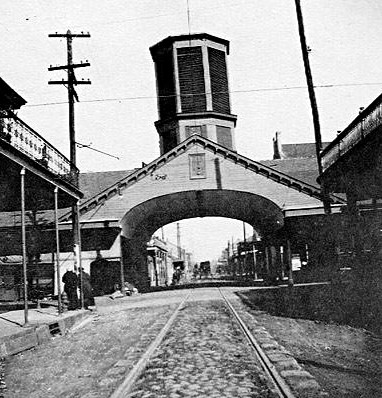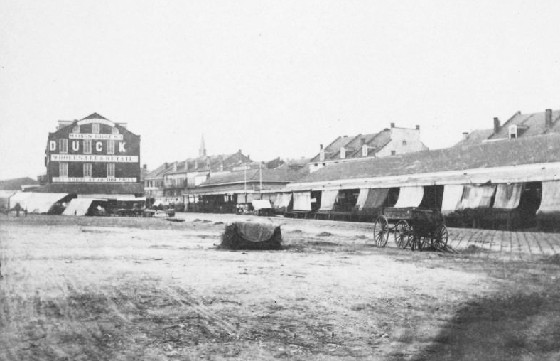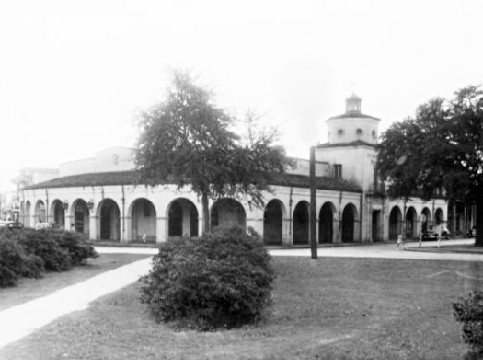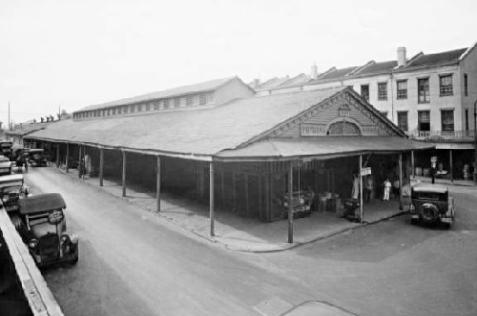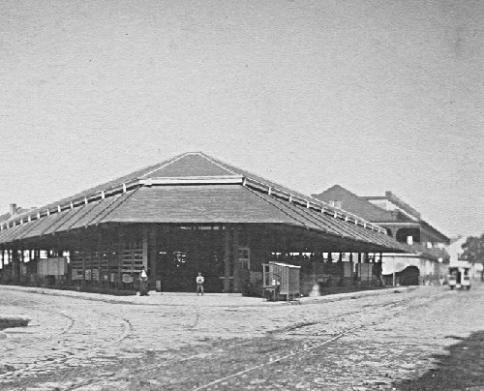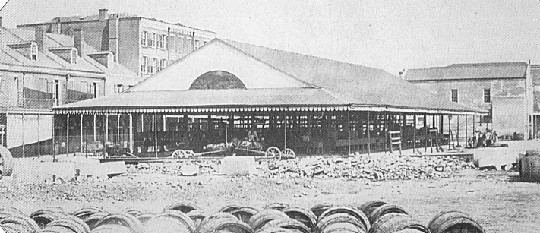
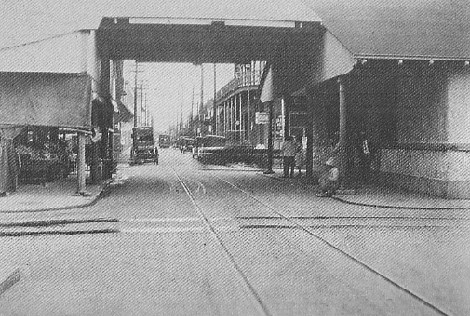
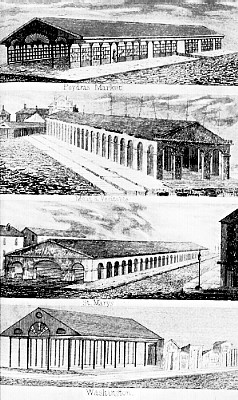
| The Old Public Markets |
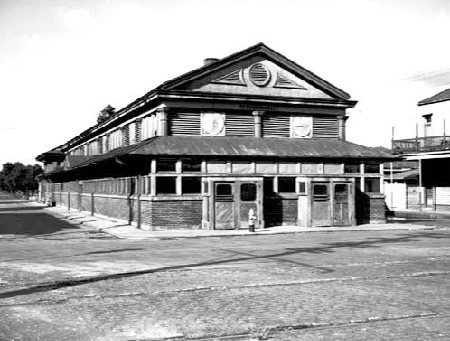
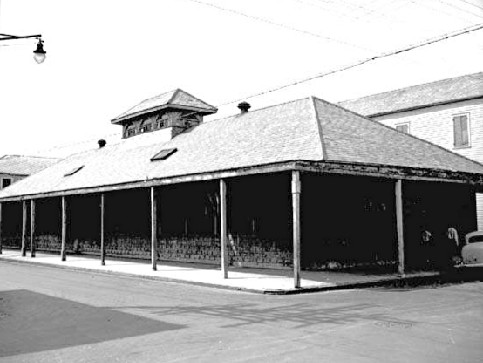
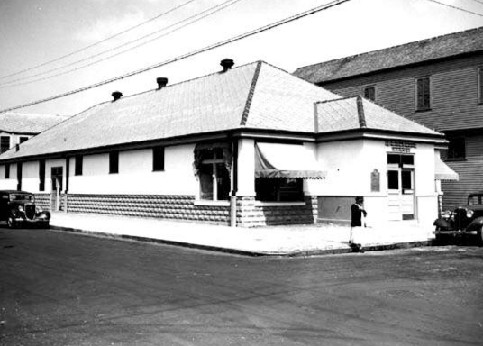
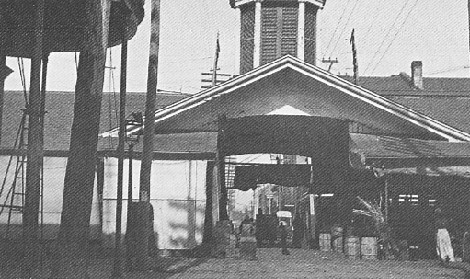
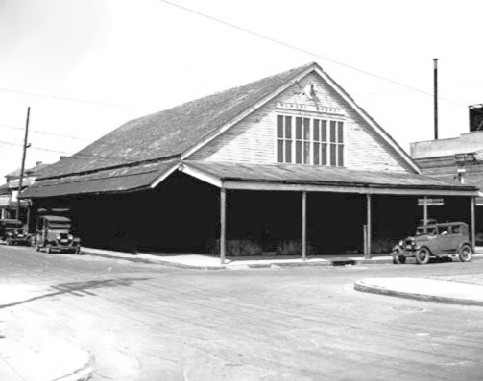
| When first opened in 1835, this was called the Port Market, but later became known as the Third District Market. It was located in Faubourg Marigny, along the river, at the top of the Marigny Triangle formed by Esplanade and Elysian Fields Avenues. This picture was taken looking toward what is now North Peters Street. Photo ca. 1858. |
Public markets once thrived in many parts of the United States, but more of these open-air
markets could be found in New Orleans than in any other city, and they continued to operate there
for a longer period of time than in any other place. Today, New Orleans has the distinction of being
home to the oldest continuously running public market in the United States - the French Market,
established in 1779.
Public markets were very popular with the French who founded the city and, also, with the
Spanish government which followed. The idea of publicly owned markets was attractive to the
Spanish because it increased local revenue and was a way of having some control over commerce
in the city.
In later years, one factor that influenced the markets' continuing popularity had to do with the fact
that New Orleans has always been a city of distinct and distinctive neighborhoods. For most New
Orleanians, neighborhood roots are very deep, so these local public markets lasted longer than
their counterparts in other cities. As Dan Baum wrote in his book, Nine Lives: Mystery, Magic, Death
& Life in New Orleans, pub. 2009, "Neighborhood identity in New Orleans is very strong; many
people here describe lives lived entirely within a dozen city blocks." In the early 1900's, there
were still thirty-two public markets, at least one in every neighborhood.
"The markets served and reflected the cultural dynamics of the city's neighborhoods. At the end of the
19th century, immigration through the port of New Orleans matched that of New York and San
Francisco in numbers and diversity. For many immigrants, the public market provided them with an
entry point into the economy as as small-scale entrepreneurs. Cheese mongers, fish mongers,
butchers and green grocers provided New Orleans shoppers with necessities like calas tout chauds
(fried rice cakes), estomac mulatre (gingerbread) and file powder for gumbo. Sicilian truck farmers
carted in crops like creole artichokes, tomatoes, garlic and fava beans. Coastal fishermen would
market oysters, shrimp, crawfish and a wide selection of fish." [From Wikipedia]
As time went by, one by one, the old public markets surrendered to the march of progress.
Implementation of mechanical refrigeration, not available in the old, open-air markets, lured
customers away. Private chain stores became more popular, aided by the fact that more people
owned automobiles. Help, in the form of modernization, came to the old markets too late. Of the
many that once existed in the city, the French Market is the only one that remains open and public.
Today, when even the most senior of the area's citizens recalls the public neighborhood markets,
his or her thoughts go to a much revised version. During the Depression of the 1930's, many of
the old markets underwent thorough renovation by the WPA and became, not only modernized, but
indoor establishments. Needless to say, this changed the appearance and, also, the character of
the quaint old markets.
markets could be found in New Orleans than in any other city, and they continued to operate there
for a longer period of time than in any other place. Today, New Orleans has the distinction of being
home to the oldest continuously running public market in the United States - the French Market,
established in 1779.
Public markets were very popular with the French who founded the city and, also, with the
Spanish government which followed. The idea of publicly owned markets was attractive to the
Spanish because it increased local revenue and was a way of having some control over commerce
in the city.
In later years, one factor that influenced the markets' continuing popularity had to do with the fact
that New Orleans has always been a city of distinct and distinctive neighborhoods. For most New
Orleanians, neighborhood roots are very deep, so these local public markets lasted longer than
their counterparts in other cities. As Dan Baum wrote in his book, Nine Lives: Mystery, Magic, Death
& Life in New Orleans, pub. 2009, "Neighborhood identity in New Orleans is very strong; many
people here describe lives lived entirely within a dozen city blocks." In the early 1900's, there
were still thirty-two public markets, at least one in every neighborhood.
"The markets served and reflected the cultural dynamics of the city's neighborhoods. At the end of the
19th century, immigration through the port of New Orleans matched that of New York and San
Francisco in numbers and diversity. For many immigrants, the public market provided them with an
entry point into the economy as as small-scale entrepreneurs. Cheese mongers, fish mongers,
butchers and green grocers provided New Orleans shoppers with necessities like calas tout chauds
(fried rice cakes), estomac mulatre (gingerbread) and file powder for gumbo. Sicilian truck farmers
carted in crops like creole artichokes, tomatoes, garlic and fava beans. Coastal fishermen would
market oysters, shrimp, crawfish and a wide selection of fish." [From Wikipedia]
As time went by, one by one, the old public markets surrendered to the march of progress.
Implementation of mechanical refrigeration, not available in the old, open-air markets, lured
customers away. Private chain stores became more popular, aided by the fact that more people
owned automobiles. Help, in the form of modernization, came to the old markets too late. Of the
many that once existed in the city, the French Market is the only one that remains open and public.
Today, when even the most senior of the area's citizens recalls the public neighborhood markets,
his or her thoughts go to a much revised version. During the Depression of the 1930's, many of
the old markets underwent thorough renovation by the WPA and became, not only modernized, but
indoor establishments. Needless to say, this changed the appearance and, also, the character of
the quaint old markets.
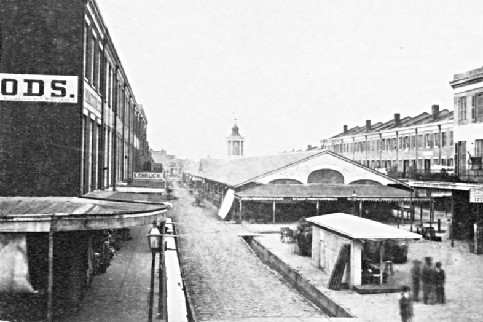
| Magazine Street Market Above, 1875; below, 2 views of the new Magazine Market constructed by the WPA, 1950's. |
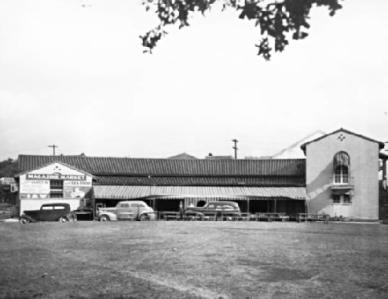
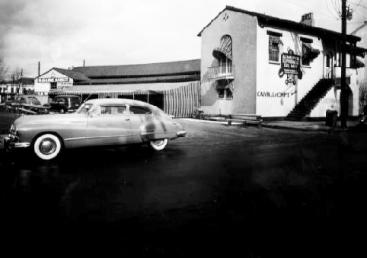
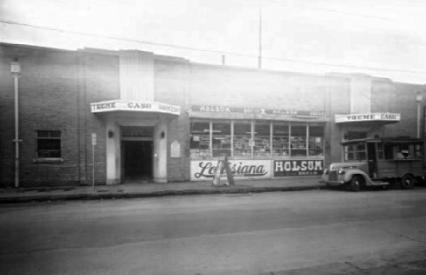
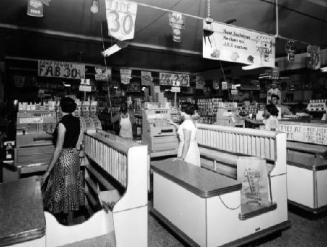
| Treme Market - Above, the old Treme Market, built in the 1830's, Orleans Avenue between Marais and N. Robertson Streets. It was demolished in the 1930's, when the new Treme Market, below, was built by the WPA. |
| St. Mary's Market, built in 1836, where Tchoupitoulas, Poyfarre, Delord and St. Joseph Streets met; photo ca. 1860's. |
| Above, the old Memory Market, 3100 block of Tulane Avenue; below, Memory Market after the WPA renovation; photos below taken in 1938. |
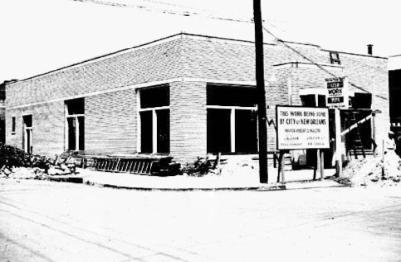
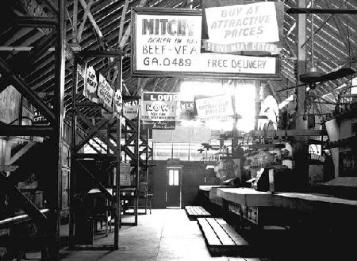
| Poydras Market, in the neutral ground of Poydras, from Baronne Street to Rampart Street, was built in 1837 on land that was once part of the Julien Poydras plantation. In 1867, there was a renovation and expansion of the market stalls all the way to Basin Street. The market closed in 1932 and was soon demolished. Above photo, looking from Baronne Street, 1860's. Photo below, Dryades Street ran under the tower of the Poydras Market, here, we're looking down Dryades from the Poydras intersection, ca. 1890. |
| Above, Poydras Market, looking up Dryades Street from Poydras, ca. 1925. Below, Poydras Market, 1920's. |
| St. Roch Market, at St. Roch and St. Claude Avenue; above and below, during and after WPA renovation. 1937-38. |
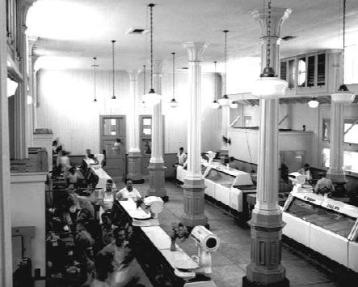
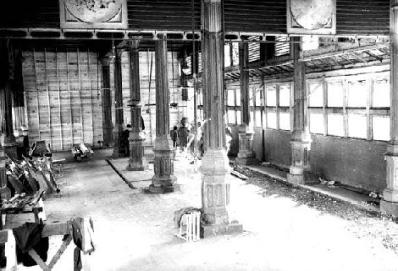
| Rocheblave Market, 200 block of North Rocheblave; above, old market, below, new market, ca. 1938. |
| From top to bottom: Poydras Market, Meat and Vegetable Market, St. Mary's Market, Washington Market, ca. 1838. |
| The Old Public Markets, Page Two The link to this page is: http://old-new-orleans.com/NO_Markets.html Back to Old New Orleans Whispers - Home |
| St. Bernard Market, 1941 |
